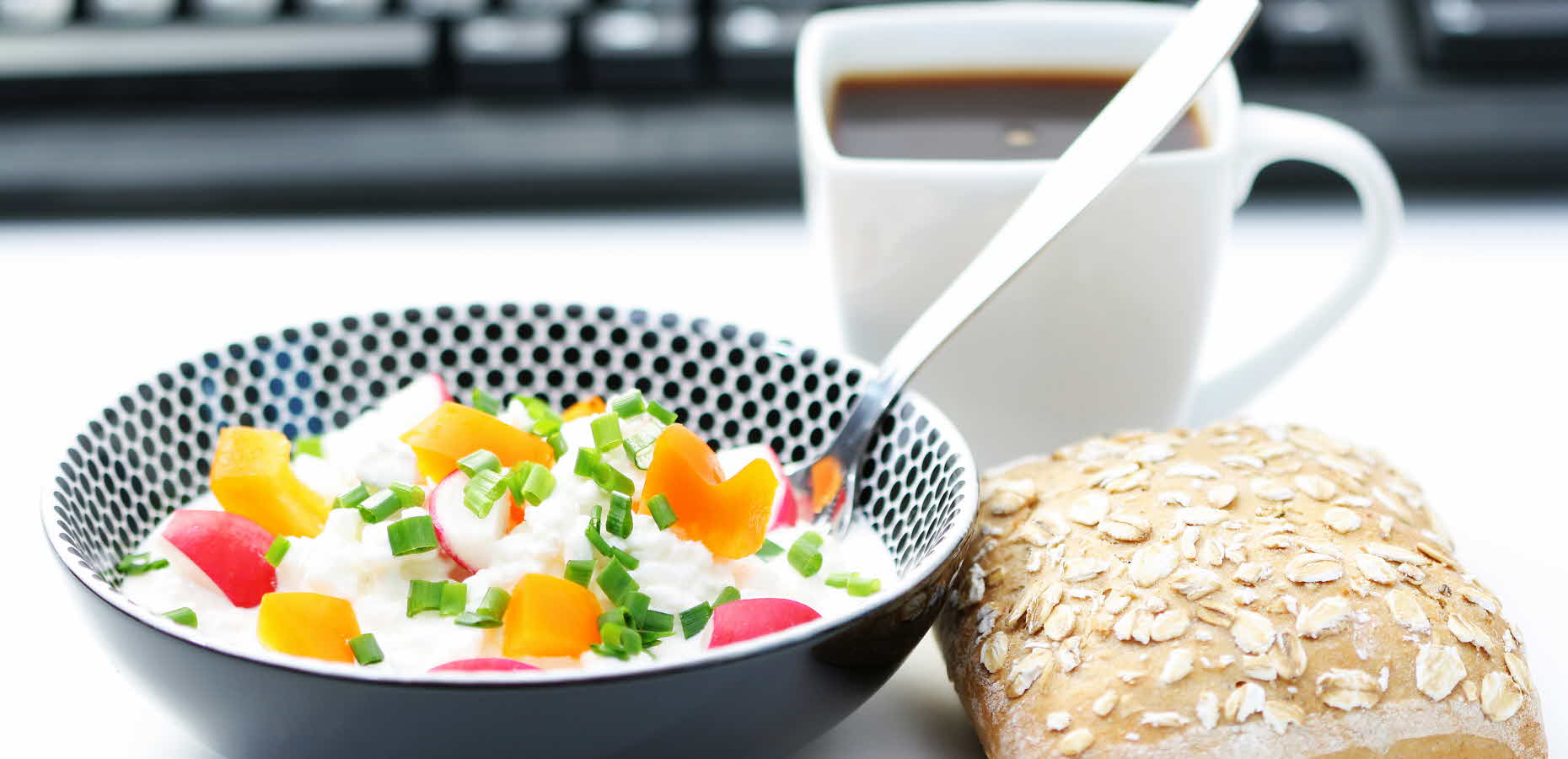What should a sedentary office worker eat to get the right amount of energy to last the entire day? Nutritional physiologist and writer Kristina Andersson gives us her top tips.
Kristina Andersson is a writer, nutritional physiologist and has many years’ experience of providing nutritional advice. Her first tip is to try to break up a sedentary working day by standing up for a minute or two every hour to increase blood circulation to the brain. Being entirely sedentary interferes with appetite regulation and makes us want to eat more, as well as increasing our desire for sweet things.
“The more inactive you are, the less you can afford to eat things that have no nutritional value. So most of what you consume as a sedentary office worker should be nutritious,” says Kristina Andersson.
Vegetables should form the basis of this. They fill you up, are nutritious and serve as food for the body’s ‘friendly’ bacteria, and are the key to good health. Good sources of protein are fish, poultry, meat and legumes. Carbohydrates are also necessary for optimum performance, acting as fuel for the brain. Good sources of carbohydrates include quinoa, brown rice and root vegetables.
Food that requires a little chewing also has an effect on the brain and increases alertness. So it’s not a good idea to just have a smoothie for lunch if you want to be on top of your game. As for the amount of food, you can base this on the fist model: a fistful of protein, one of carbohydrates and two of vegetables.
“Naturally, other factors play their part, such as how active you are in your free time and your build. This is general advice for a sedentary person. Avoid eating too little, as you won’t be able to maintain focus throughout the day. Too little food during the day makes you more likely to want sweets in the evening,” says Kristina Andersson.
Food to avoid includes heavily processed food and carbohydrates with a high glycemic index.
“If you eat something sweet, the brain gains new energy and you feel like you’re on top of things. This can work in emergencies, but if you always use this strategy, you’ll ultimately be penalised for it. Choose less-refined fuel for the brain instead,” explains Kristina Andersson.



